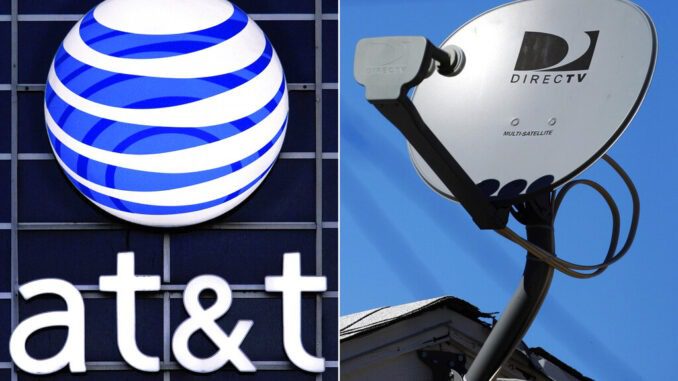
AT&T is spinning off its DirecTV into a new company for a fraction of the $48.5 billion it paid for the satellite TV service in 2015. DirecTV has lost millions of customers on AT&T’s watch, and is valued in the deal at just $16.25 billion, including debt.
Private equity firm TPG will own 30% of the business, while AT&T holds the rest. The telecom company will receive $7.8 billion in cash, including $1.8 billion from TPG and and $5.8 billion from the new DirecTV firm, which is borrowing that sum. The new DirecTV will also take on $200 million in debt from AT&T.
AT&T launched its streaming service HBO Max last year and has focused on building that business. It also owns TV networks like CNN and TBS along with the Warner Bros. movie studio in addition to its huge wireless and internet business.
AT&T said the deal will strengthen its balance sheet and let it focus on the expensive task of upgrading its wireless network with next-generation 5G technology. That update requires expensive investments in radio spectrum — it just spent $23.4 billion for bandwidth in the latest U.S. government auction — and AT&T also plans to plow more resources into fiber-optic internet infrastructure and HBO Max.
AT&T will use the deal proceeds to pay down debt.
The new DirecTV company will include AT&T TV, a streaming version of cable TV, and U-verse, AT&T’s older cable service. AT&T will retain its Latin America DirecTV business. AT&T said it expects “few to no changes” for subscribers. The deal is expected to close in the second half of the year.
“It’s fair to say that some aspects of the (DirecTV) transaction have not played out as we had planned, such as pay TV households in the U.S. declining at a faster pace across the industry than anticipated,” AT&T wrote.
U.S. and Canadian subscribers to cable or satellite television services dropped by 27 million between 2010 and 2020, and fell by 6 million in 2020 alone, said Digital TV Research. A burst of new streaming services have recently emerged to compete with Netflix, including HBO Max, Disney+ and NBCUniversal’s Peacock. AT&T’s video business has lost 6.7 million customers over the past two years, and claimed 17.2 million subscribers at the end of 2020.



